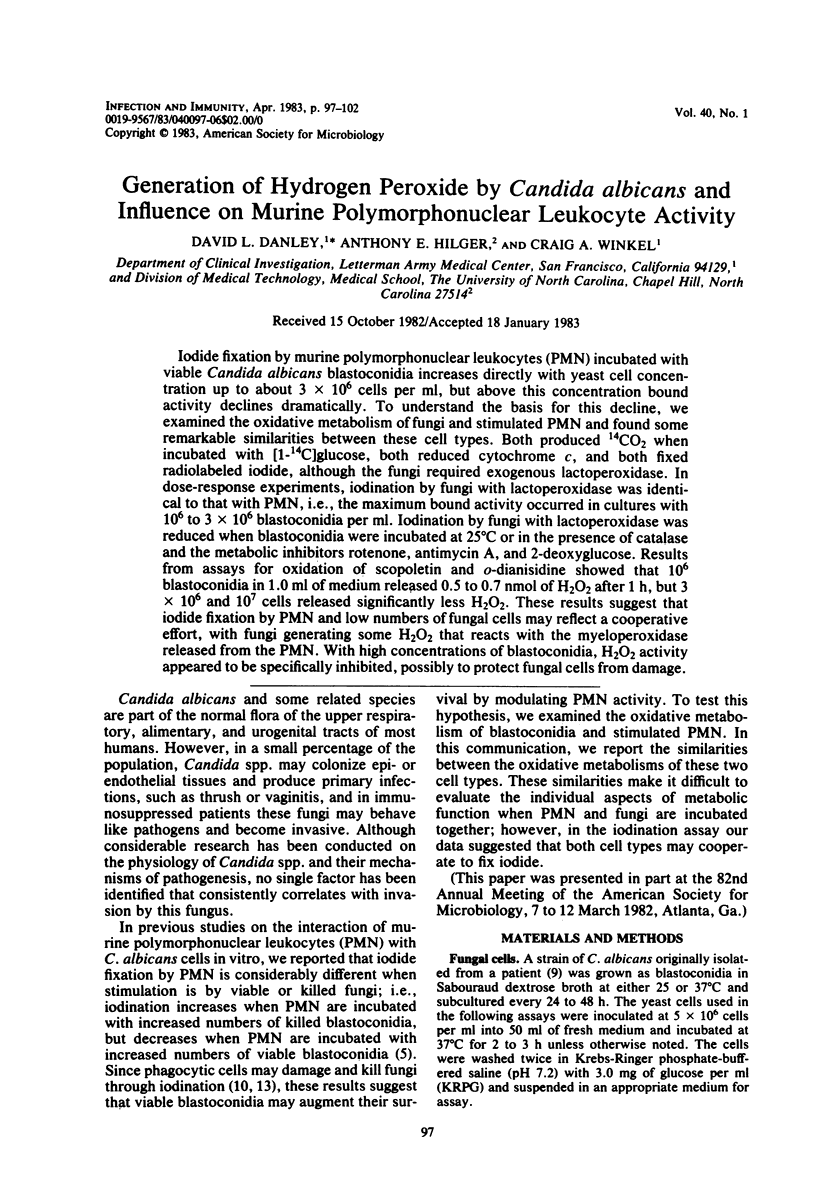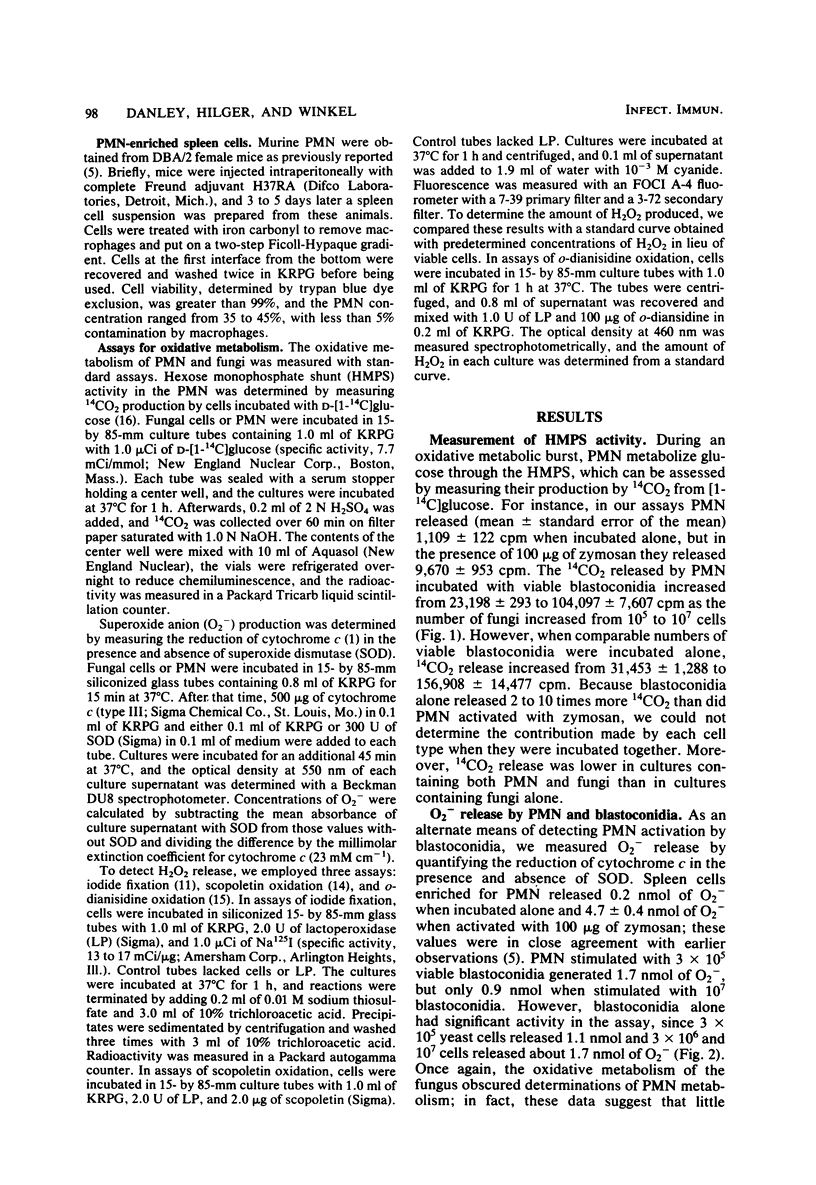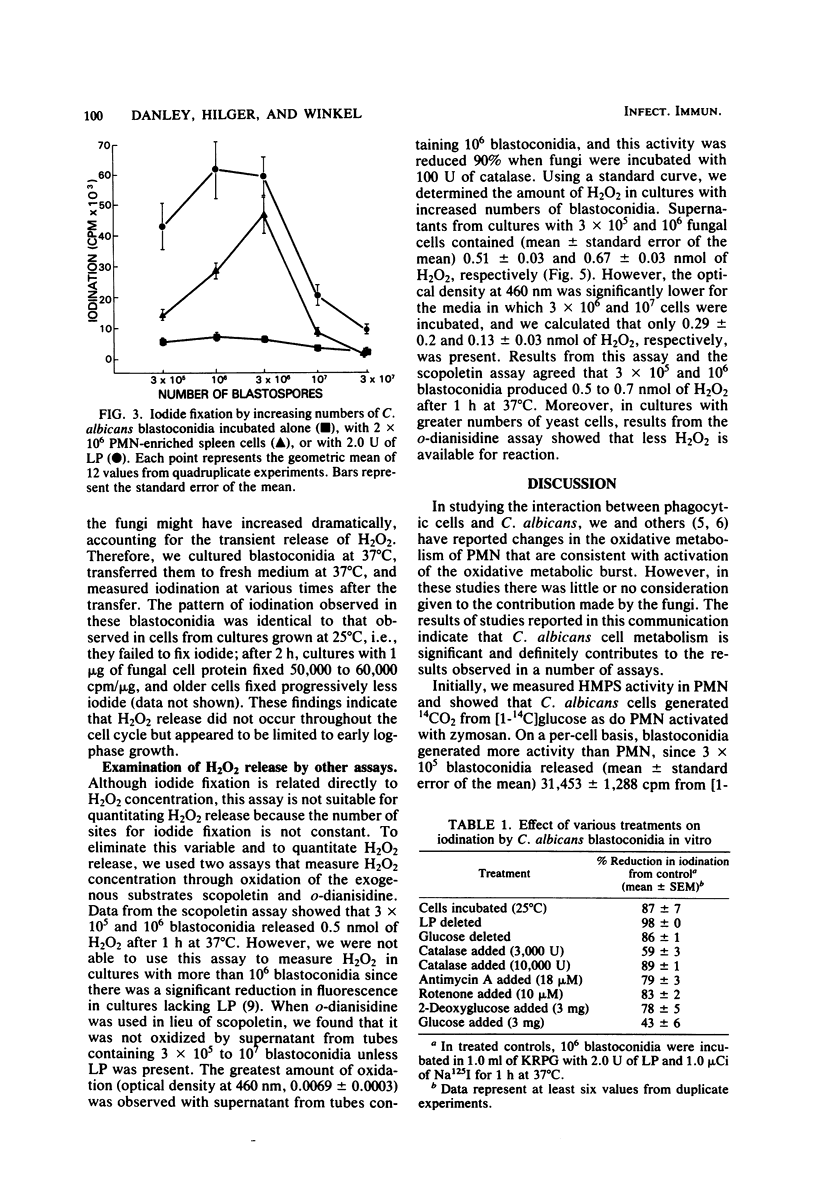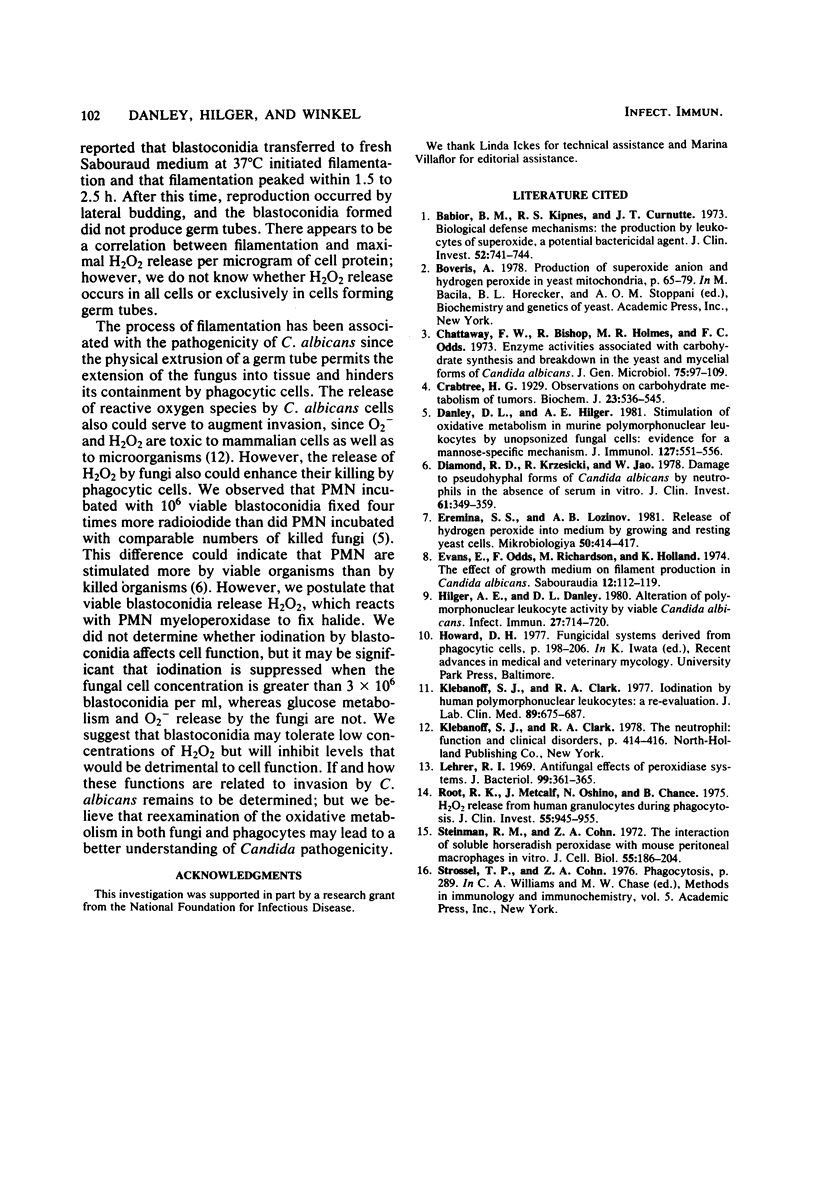Abstract
Iodide fixation by murine polymorphonuclear leukocytes (PMN) incubated with viable Candida albicans blastoconidia increases directly with yeast cell concentration up to about 3 x 10(6) cells per ml, but above this concentration bound activity declines dramatically. To understand the basis for this decline, we examined the oxidative metabolism of fungi and stimulated PMN and found some remarkable similarities between these cell types. Both produced 14CO2 when incubated with [1-14C]glucose, both reduced cytochrome c, and both fixed radiolabeled iodide, although the fungi required exogenous lactoperoxidase. In dose-response experiments, iodination by fungi with lactoperoxidase was identical to that with PMN, i.e., the maximum bound activity occurred in cultures with 10(6) to 3 x 10(6) blastoconidia per ml. Iodination by fungi with lactoperoxidase was reduced when blastoconidia were incubated at 25 degrees C or in the presence of catalase and the metabolic inhibitors rotenone, antimycin A, and 2-deoxyglucose. Results from assays for oxidation of scopoletin and o-dianisidine showed that 10(6) blastoconidia in 1.0 ml of medium released 0.5 to 0.7 nmol of H2O2 after 1 h, but 3 X 10(6) and 10(7) cells released significantly less H2O2. These results suggest that iodide fixation by PMN and low numbers of fungal cells may reflect a cooperative effort, with fungi generating some H2O2 that reacts with the myeloperoxidase released from the PMN. With high concentrations of blastoconidia, H2O2 activity appeared to be specifically inhibited, possibly to protect fungal cells from damage.
Full text
PDF





Selected References
These references are in PubMed. This may not be the complete list of references from this article.
- Babior B. M., Kipnes R. S., Curnutte J. T. Biological defense mechanisms. The production by leukocytes of superoxide, a potential bactericidal agent. J Clin Invest. 1973 Mar;52(3):741–744. doi: 10.1172/JCI107236. [DOI] [PMC free article] [PubMed] [Google Scholar]
- Chattaway F. W., Bishop R., Holmes M. R., Odds F. C., Barlow A. J. Enzyme activities associated with carbohydrate synthesis and breakdown in the yeast and mycelial forms of Candida albicans. J Gen Microbiol. 1973 Mar;75(1):97–109. doi: 10.1099/00221287-75-1-97. [DOI] [PubMed] [Google Scholar]
- Crabtree H. G. Observations on the carbohydrate metabolism of tumours. Biochem J. 1929;23(3):536–545. doi: 10.1042/bj0230536. [DOI] [PMC free article] [PubMed] [Google Scholar]
- Danley D. L., Hilger A. E. Stimulation of oxidative metabolism in murine polymorphonuclear leukocytes by unopsonized fungal cells: evidence for a mannose-specific mechanism. J Immunol. 1981 Aug;127(2):551–556. [PubMed] [Google Scholar]
- Diamond R. D., Krzesicki R., Jao W. Damage to pseudohyphal forms of Candida albicans by neutrophils in the absence of serum in vitro. J Clin Invest. 1978 Feb;61(2):349–359. doi: 10.1172/JCI108945. [DOI] [PMC free article] [PubMed] [Google Scholar]
- Eremina S. S., Lozinov A. B. Vydelenie perekisi vodoroda v sredu rastushchimi i pokoiashchimisia kletkami drozhzhei. Mikrobiologiia. 1981 May-Jun;50(3):414–417. [PubMed] [Google Scholar]
- Evans E. G., Odds F. C., Richardson M. D., Holland K. T. The effect of growth medium of filament production in Candida albicans. Sabouraudia. 1974 Mar;12(1):112–119. doi: 10.1080/00362177485380151. [DOI] [PubMed] [Google Scholar]
- Hilger A. E., Danley D. L. Alteration of polymorphonuclear leukocyte activity by viable Candida albicans. Infect Immun. 1980 Mar;27(3):714–720. doi: 10.1128/iai.27.3.714-720.1980. [DOI] [PMC free article] [PubMed] [Google Scholar]
- Klebanoff S. J., Clark R. A. Iodination by human polymorphonuclear leukocytes: a re-evaluation. J Lab Clin Med. 1977 Mar;89(3):675–686. [PubMed] [Google Scholar]
- Lehrer R. I. Antifungal effects of peroxidase systems. J Bacteriol. 1969 Aug;99(2):361–365. doi: 10.1128/jb.99.2.361-365.1969. [DOI] [PMC free article] [PubMed] [Google Scholar]
- Root R. K., Metcalf J., Oshino N., Chance B. H2O2 release from human granulocytes during phagocytosis. I. Documentation, quantitation, and some regulating factors. J Clin Invest. 1975 May;55(5):945–955. doi: 10.1172/JCI108024. [DOI] [PMC free article] [PubMed] [Google Scholar]
- Steinman R. M., Cohn Z. A. The interaction of soluble horseradish peroxidase with mouse peritoneal macrophages in vitro. J Cell Biol. 1972 Oct;55(1):186–204. doi: 10.1083/jcb.55.1.186. [DOI] [PMC free article] [PubMed] [Google Scholar]


